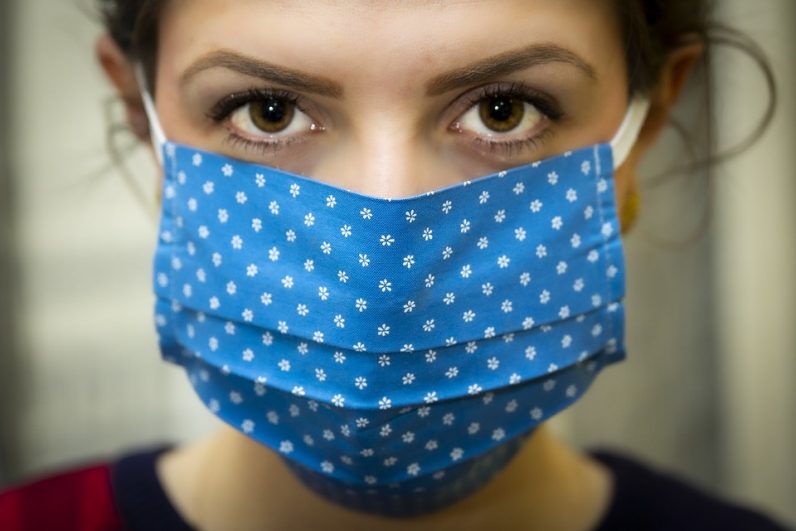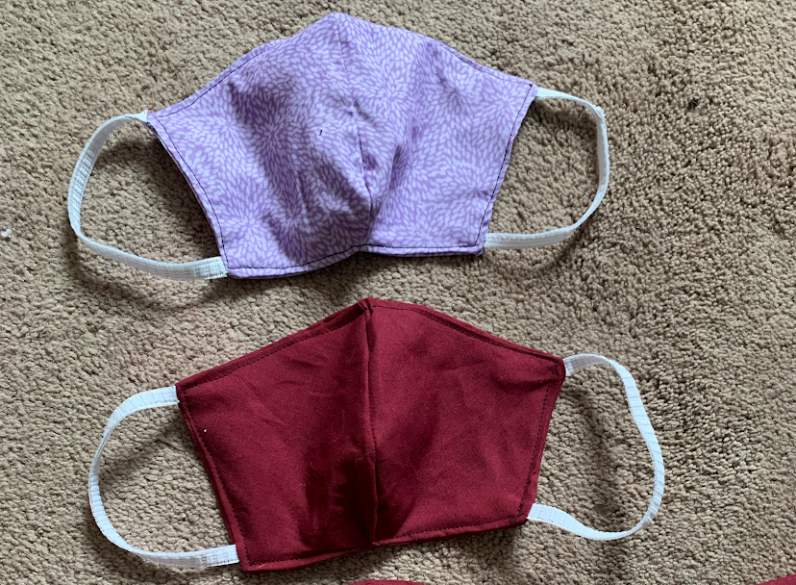
(Christo Anestev / Pixabay)
Teens at one archdiocesan Catholic high school are using their sewing skills to help combat the coronavirus pandemic.
Fashion design students at St. Hubert Catholic High School for Girls in Philadelphia have been making dozens of face masks to help fill a critical need for personal protective equipment, or PPE.
[hotblock]
The highly contagious coronavirus – which has infected in excess of 500,000 and killed more than 23,000 globally – is thought to spread mainly through respiratory droplets from coughs and sneezes.
Medical professionals throughout the world are facing critical shortages of PPE, including surgical masks and the close-fitting N-95 respirator, which blocks at least 95% of airborne particles.
In response, crafters have been creating face masks at home – among them, some two dozen girls enrolled in St. Hubert’s first- and second-level clothing design classes.

Students at St. Hubert Catholic High School for Girls have been making face masks in response to a shortage of protective equipment during the coronavirus pandemic. (Photo courtesy of Danielle Finocchiaro / Latasha Hall)
Instructor Latasha Hall said she assigned the extra credit project in response to grassroots efforts to address the PPE shortage.
“I’d had people asking if I’d seen various articles on making masks,” said Hall, who also heads up the Philadelphia-based Lillie Couturier, which specializes in bridal wear. “Christian Siriano and other designers were spearheading the efforts, and I thought it would be good for the girls.”
Because of the state’s stay-at-home orders during the pandemic, students are working with cotton fabric they already have on hand in their residences, although Hall is working to secure additional supplies. The fabric is suited for the task because of its “tightly woven, multiple layers” that allow wearers to breathe comfortably, said Hall.
To reinforce the masks, students are also using interfacing, a type of rigid cotton blend that “looks like a dryer sheet” and works to stabilize the fabric, she said.
Some of the designs even include pockets into which a charcoal filter can be inserted to enhance protection.
Although many crafters have been sewing masks by hand, Hall’s students are relying on their home sewing machines, which yield a sturdier stitch.
That strength will be required for the disinfectant process the finished masks will undergo, which will involve a “very heavy washing” and treatment, said Hall.

Fashion design instructor Latasha Hall of St. Hubert Catholic High School for Girls in Philadelphia has coordinated a face mask sewing campaign among her students to help meet critical deficits in supplies of protective gear during the coronavirus pandemic. (Photo courtesy of Latasha Hall)
Health care professionals throughout the nation are divided on the feasibility of homemade masks, which cannot offer the same level of protection as N-95 and surgical masks.
Yet the dire shortage of masks recently prompted the Centers for Disease Control (CDC) to recommend the use of homemade alternatives as a last resort for medical workers.
Hall said that her students – who are able to make one mask every 30 minutes, depending on their sewing skills – are also assisting underserved populations through the project.
“These are people in the community who won’t be reached by the mass production companies,” said Hall. “And these masks will stay in the local community.”
Student Danielle Finocchiaro, for example, created a set for a retirement home at which she used to work.
The sewing effort is also an opportunity for students to show their families what they’ve been learning in the classroom.
“My student Kaitlyn Lepkowski said her mom was asking how she could make a mask, but Kaitlyn said they’ll work on it together, since she doesn’t have the patience to teach her mother,” Hall said.
With their colorful designs, the masks also provide a much-needed lift at a difficult time, she said, adding that her own late mother would have approved.
“She’d had a double lung transplant and had to wear a mask, so she found ones that had cute prints,” said Hall. “If she could see how the masks look now, she would have been like, ‘Wow.’”
PREVIOUS: St. Paul Parish sees donations drop, launches online fundraiser
NEXT: Watch Mass with archbishop from your home



Share this story